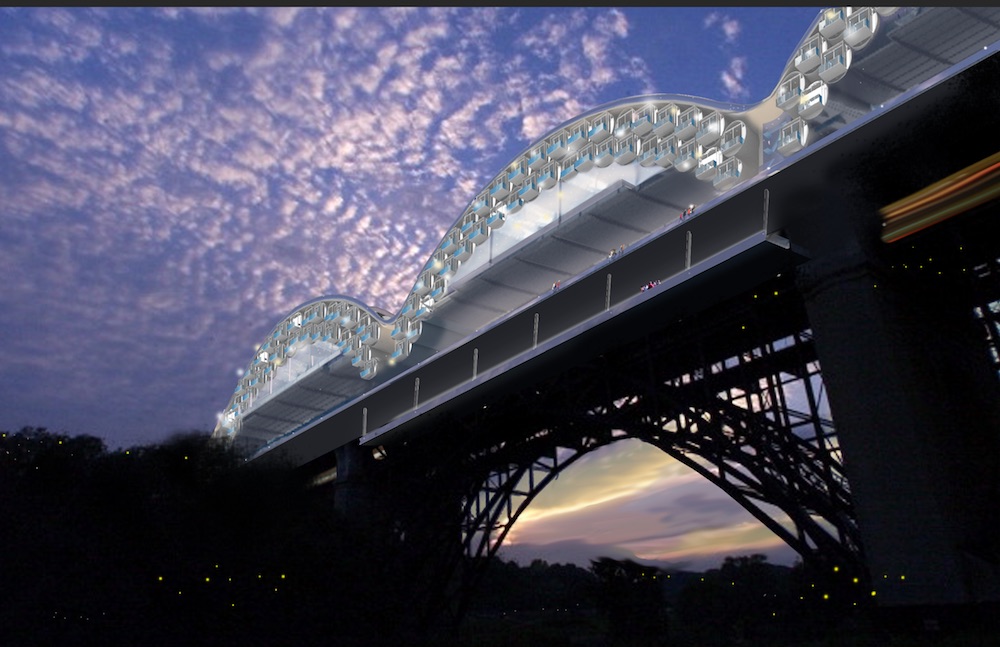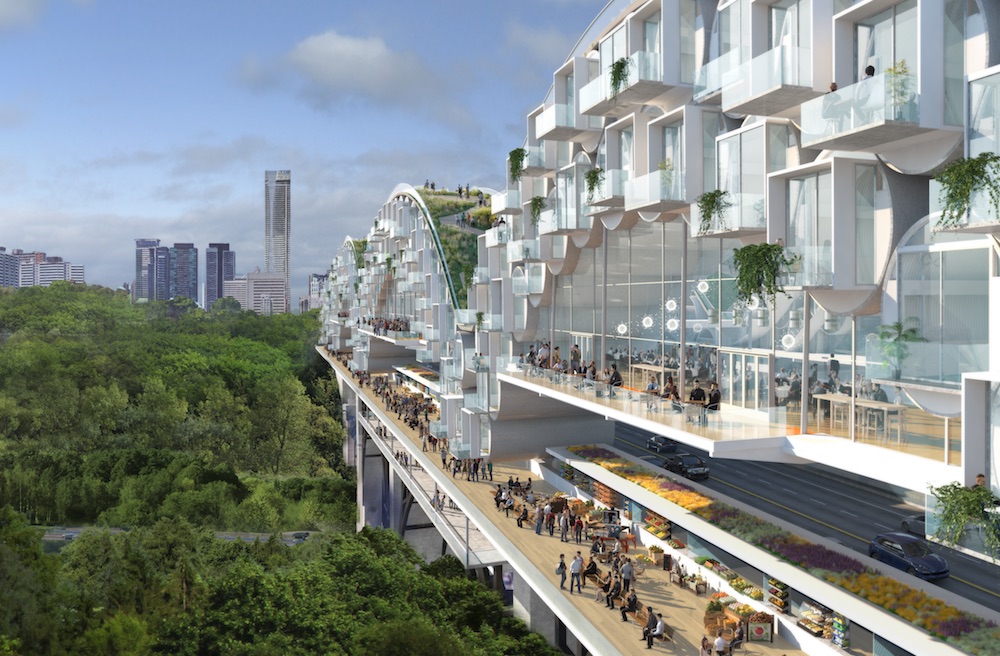Bridges & Tunnels / Healthy Cities
Living bridges: from passive structures to economic and health drivers
By Andrew Sansom | 14 Aug 2017 | 0
Bridges have the potential to be transformed from passive pieces from infrastructure, often in a perpetual state of disrepair, into animated areas of dynamic community activity with healthy housing options.
This is the vision of Canadian architect Tye Farrow, senior partner of Farrow Partners, who will be speaking about his ‘living bridges’ concept at the inaugural Healthy City Design congress in London on 16-17 October.
Farrow’s design imagines the city’s most costly infrastructure as high-performing social and cultural urban revenue generators. It envisages a culture where spending on pipes, pavement, single-use bridges and transit could instead be directed toward the challenges of affordable housing and community-building. 
He believes that if we can shed the 20th century ways of thinking about infrastructure and construction, then a spectacular era of fresh innovation awaits in urban development. The concept takes inspiration from the Italian cities of Venice and Florence, which, many centuries ago, addressed the challenge of building a mix of housing, cafes and shops in the heart of a dense urban area to fund the upkeep of infrastructure.
The Rialto Bridge in Venice and the Ponte Vecchio Bridge in Florence combines infrastructure with human-scale, walkable, mixed-use urban assets, explains Farrow, who points out that as early as the 15th century, shops were built along the side of the Rialto Bridge to generate rental income for the State treasury to undertake maintenance.
“The future of accessible, affordable housing and multi-use infrastructure will be built with lighter, more flexible, less expensive and more resource-efficient construction materials and methods,” says Farrow, who extols the virtues of Grip Metal, describing it as “a game-changing bonding and building system”.
Grip Metal is described as a patented stamping process created to modify sheet metal, applying an array of micro-formed hooks that can physically adhere with other materials without the use of traditional adhesives. Applied as either a point of bonding for varying materials within larger structures or as a mediating layer between different materials, Grip provides high shear resistance, transferring the core strengths of metal to lightweight laminate or composites.
“Originally perfected within the auto industry, which is driven by lighter, less-expensive, better performance and quality mindsets, this breakthrough is the catalyst for enhancing our quality of life while reducing costs,” Farrow explains. “Grip Metal to the construction industry is the equivalent transformation as Tesla is to the car industry.”
He suggests that by marrying this technology with the need for affordable, vibrant housing and the infrastructure of existing bridges, these structures can be transformed into socially inclusive places that provide a backdrop to diverse activities, including new technology-enabled lightweight housing and services.
 As part of his work in this area, Farrow has reimagined Toronto’s iconic Bloor Viaduct as a living bridge. The design sees hundreds of cylinders featuring individual housing suites – about 350 square feet in size – contained within the bridge’s arches. Each stylish housing unit contains a balcony, living room, kitchen, large bathroom and a loft bedroom.
As part of his work in this area, Farrow has reimagined Toronto’s iconic Bloor Viaduct as a living bridge. The design sees hundreds of cylinders featuring individual housing suites – about 350 square feet in size – contained within the bridge’s arches. Each stylish housing unit contains a balcony, living room, kitchen, large bathroom and a loft bedroom.
Space below the housing units is used for restaurants, hotels and places that promote social inclusion. At the edges of the existing roadway, a thriving retail area includes market stalls and shops necessary for daily life, as well as a pedestrian and bicycle path overlooking the valley. The roof structure, meanwhile, provides green space and parkland, akin to New York’s High Line.
“At a time when governments are wrestling with big decisions about infrastructure spending, economic stimulation and promoting a more inclusive society with healthy housing options, we can’t use the same thinking or we’ll get the same tired outcomes,” reflects Farrow.
“We can and must take advantage of new approaches that build on our past foundations to create cities that are affordable to people who are essential to the future of thriving, resilient and healthy communities; cities that promote density, inclusiveness, wellbeing, affordability and – above all – that thrive.”
Tye Farrow will present on ‘Living bridges: healthy urban infrastructure as a multi-use economic asset’, at Healthy City Design, on 17 October, at the Royal College of Physicians, London.
Updates on the progress of the ‘living bridges’ project will be posted at instagram@tyefarrow.
